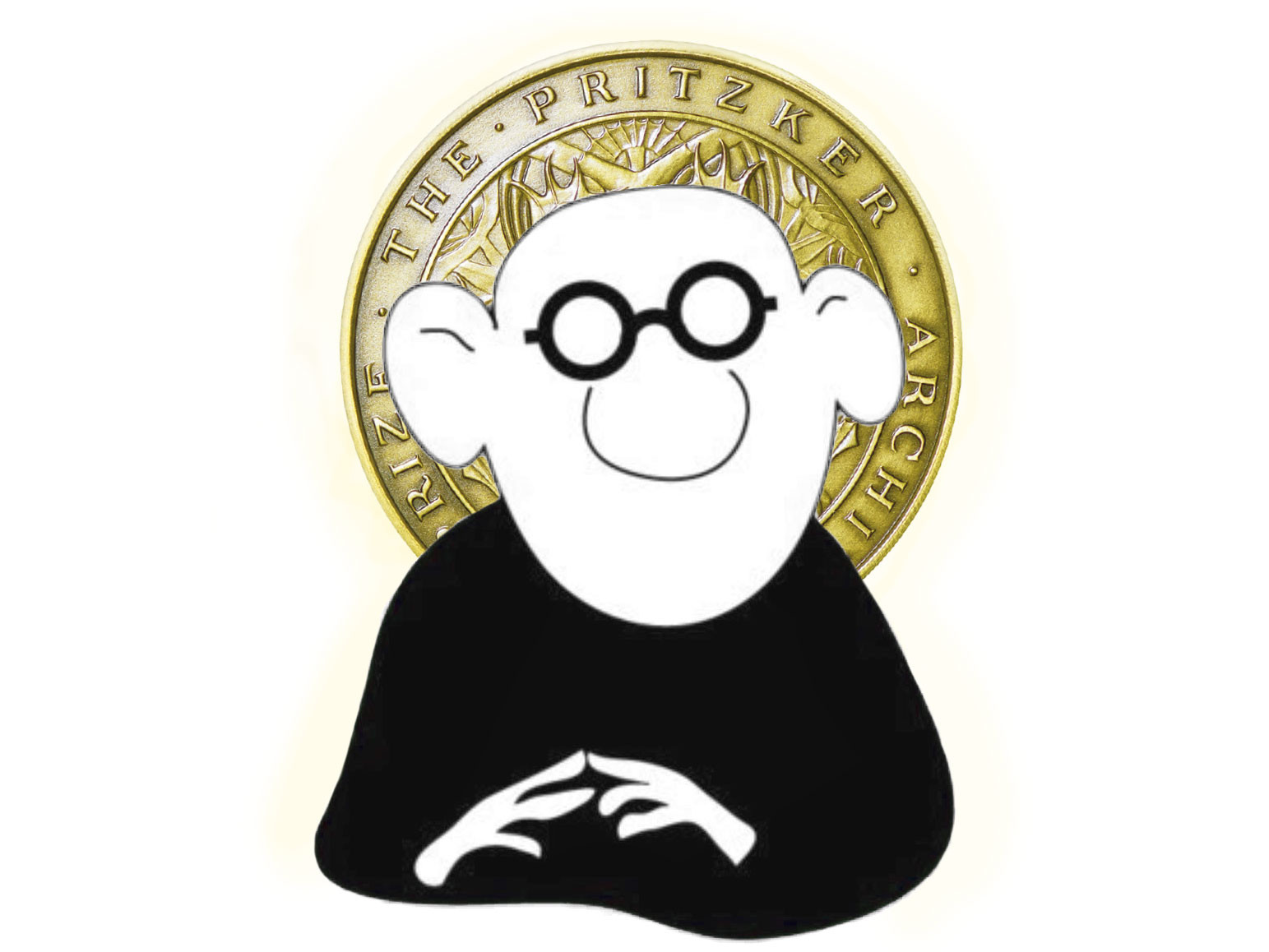
As the Pritzker Jury begins its deliberations for the 2015 Pritzker Prize, this is a critical time of year for shaping the landscape of architectural debate for the coming year and beyond. The following is an open letter to Martha Thorne, the Executive Director of the Pritzker Prize, from Conrad Newel, author of the popular blog Notes on Becoming a Famous Architect.
Dear Martha,
I have to hand it to you and all the people on the Pritzker committee, you guys are a very crafty bunch. Just when I thought I had you all figured out, you have now - even though only slightly - succeeded in confounding me.
From my 2011 analysis of the Pritzker, I figured that your potential pool of laureates was always a very predictable bunch. In fact anyone could look at my data and predict with reasonable certainty that the next laureate would most likely be an Asian or Caucasian male starchitect from Europe, The USA, or Japan. I further pointed out that none of your laureates have done much in the way of humanitarianism, despite the fact that the mission statement of the Pritzker also asks that the recipient should be making significant contributions to humanity. I maintained that this part of the mandate has been consistently overlooked.
So when the committee selected Shigeru Ban, I didn’t quite know how to react. On the one hand he is a painfully predictable choice according to my analytical model: He is an Asian male starchitect from Japan, so no surprise there. On the other hand however, the committee selected him citing his humanitarian work.
It warmed my heart to hear that. Really! I sincerely admire Shigeru Ban and his genuinely innovative efforts in the area of humanity. You guys did not go all the way and choose someone outside the typical profile; but so what! I was not going to complain about that in this case. So I kept silent (until, that is, Patrik Schumacher said something utterly stupid and spoiled it, and I found myself in the curious position of defending the Pritzker Prize - even though I have been so critical of it in the past).
Anyway, the reason I am writing you today is to take you up on that offer you made the last time we communicated: I would like to make a nomination for the Pritzker Prize. You may remember I declined the last time, but now I have changed my mind. I would like to nominate Architecture for Humanity, Architects without Borders and MASS Design Group. Let me be clear, I am not nominating Peter Newton and Matt Charney, Cameron Sinclair and Kate Stohr, or Michael Murphy and Alan Ricks; I am suggesting the whole organizations. I support celebrating teams not team leaders. To single out the leader for the work that everyone does strikes me as fundamentally unfair - although given the news broken last week of Architecture for Humanity's closure, to award them the Pritzker now may require a complex philosophical discussion on what the rule against posthumous awards means in the context of an organization.
Since the Pritzker often refers to itself as the Nobel Prize of Architecture, I will once again implore you to follow their example by reminding you of Alfred Nobel’s directions and how the Nobel Prize selection committee interprets this. The Nobel Peace prize mandates that the prize should be given to a person (singular). However, the Nobel committee has given the prize multiple times to organizations such as the United Nations, The International Red Cross, and several other organizations over the course of its history.
Since this is an open letter, I will also restate the purpose of the Pritzker Prize here: To honor a living architect or architects whose built work demonstrates a combination of those qualities of talent, vision, and commitment, which has produced consistent and significant contributions to humanity and the built environment through the art of architecture.
I emphasize “consistent and significant contributions to humanity” to belabor the point.
Architecture for Humanity’s mission can be summarized as follows:
Architecture for Humanity is a charitable organization that seeks architectural solutions to humanitarian crises and brings professional design services to communities in need. They believe that where resources and expertise are scarce, innovative, sustainable and collaborative design can make a difference.
Similarly, the mission of Architects without Borders (Architecture Sans Frontieres International) is:
ASF INT was founded as a result of an increased interest in social and environmental issues in relation to the built environment and dissatisfaction with ethical standards of mainstream architecture.
And finally, the mission of MASS Design Group can be summarized:
Using an immersive understanding of the context of a project, they design beautiful buildings that deliver dignity, improve health and well-being, and have the greatest positive impact in the communities they serve. Next, they leverage the construction process to maximize economic, educational, and environmental outcomes, finally evaluating the quantitative and qualitative impacts of the design and construction process to prove the value of architecture in improving people’s lives.
What better way to honor the Pritzker's mandate than by awarding the prize to one of these institutions, who have made it their mission to make built work that demonstrates a combination of talent, vision, and commitment - and that have consistently produced significant contributions to humanity and the built environment through the art of architecture?
All the best,
Conrad Newel
NOTES ON BECOMING A FAMOUS ARCHITECT
Liberating Minds Since August 2007

